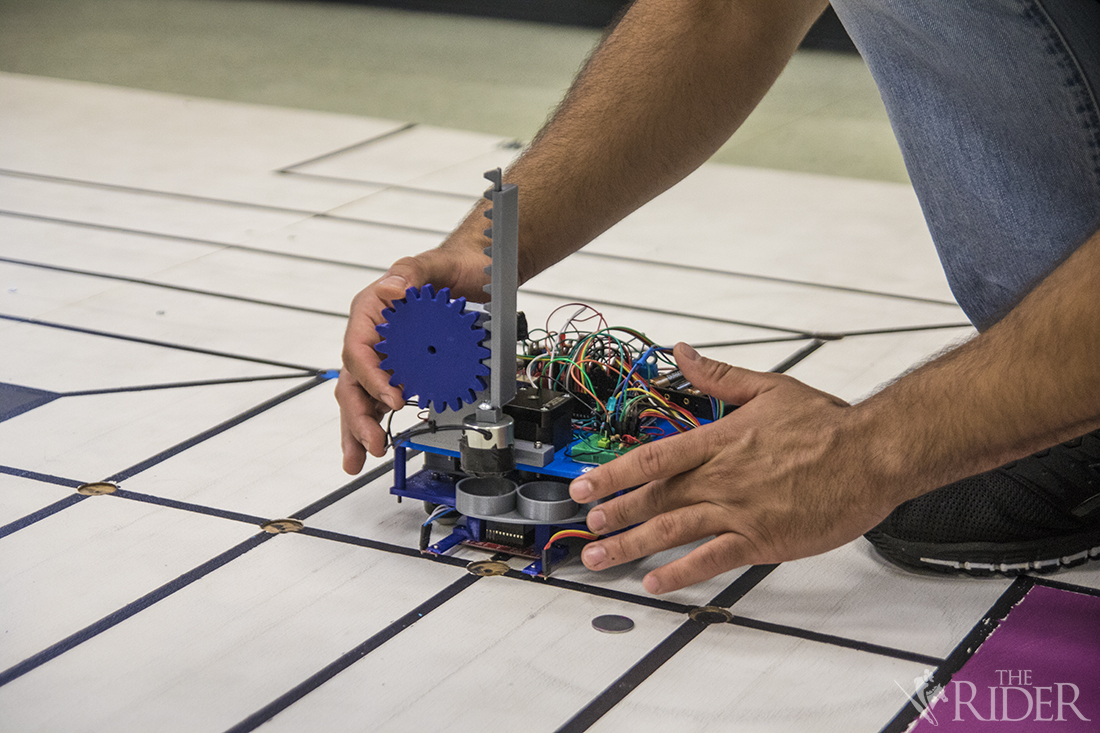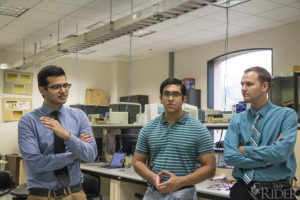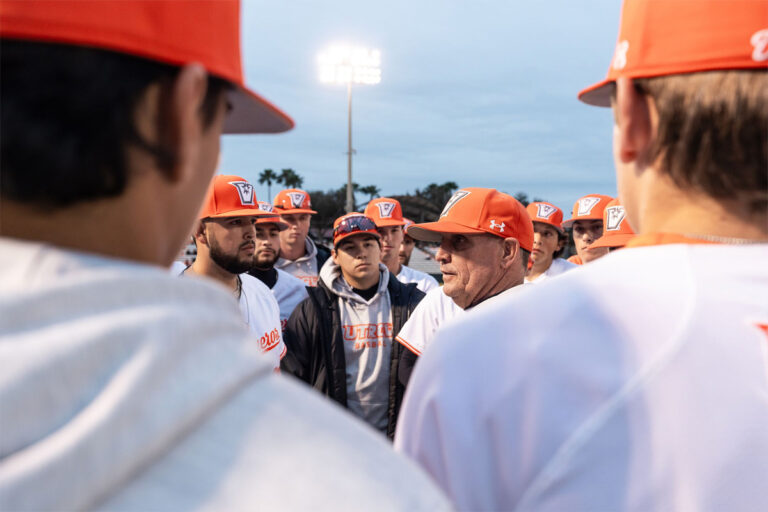
UTRGV engineering seniors Joshua Acosta, Samuel Roberts and Salvador Garza, who form the team SSJ, finished first among Texas universities at the IEEE Region 5 Robotics Competition in Austin.
The Institute of Electrical and Electronics Engineers hosts a robotic competition every year.
“They produced a new challenge,” Garza said of the April 7 contest. “Last year, it was to detect a tunnel. This year, it is to navigate a course and pick up the payload, which is a token in this case, and find a way to get it to a delivery zone, drop-off area.”
The robot was made by Acosta, a computer engineering major, and electrical engineering majors Garza and Roberts, who preprogrammed it to pick up a total of 12 tokens without requiring someone to consistently command it.
“We decided to do this as our senior design project,” Roberts said. “We were all in Senior Design I last semester and we formed [our] team.”
The team members had previously heard of the competition and wanted to participate.
“They let us do this for our senior design project, so we could have the time and funds to complete the project,” Roberts said.
The team met four to five days out of the week since September for three to four hours.
“Near the end of it, we were working a lot more,” Garza said. “More like six to eight hours a day.”
The team would not leave the lab until at least 10:30 p.m. to midnight.
“This past semester, we were living in the lab,” Roberts joked. “We spent hundreds of hours working on it.”

Most of the difficulties the team faced consisted of testing which would last around 45 minutes each time.
“We had to be sure we were looking because if something happened, that we did not want to happen, we would have to [figure out] what happened and how do we fix it,” Acosta said.
He said the robot was made using a combination of Arduino software, as well as the team’s construction and programming “so that it picks up 12 tokens.”
Tokens were picked up using sensors that detect the color of the wanted token and stored inside a designated compartment in the robot.
“At the very end, it drops them all off,” Acosta said.
Garza and Acosta worked on the initial designs. Acosta’s work concentrated on the initial programming. Roberts was in charge of 3-D modeling, printing and designing some of the circuit. All team members helped with debugging and testing.
SSJ wanted to name the robot but said none of the names stuck.
“We used to call it The Punisher,” Roberts said.
He explained it was due to how harshly the robot’s magnet, which picks up the tokens, would slam down when grabbing items.
They also called the robot Tower of Gray but preferred Big Blue.
Right before competition, Garza also said the team had initial difficulties with getting the robot to work.
“It would not work for some reason. We were there stressed out,” Garza said. “… We took all the wires out and put them on the mic controller, booted it up, and we set it up for a run, hoping it would work. Sure enough, it worked well.”
Roberts said the team won fourth overall out of 31 teams and first place among Texas universities.
After graduation, Acosta and Garza would like to attend graduate school. Roberts, who has a military background, is considering accepting a job offer in the defense industry.





